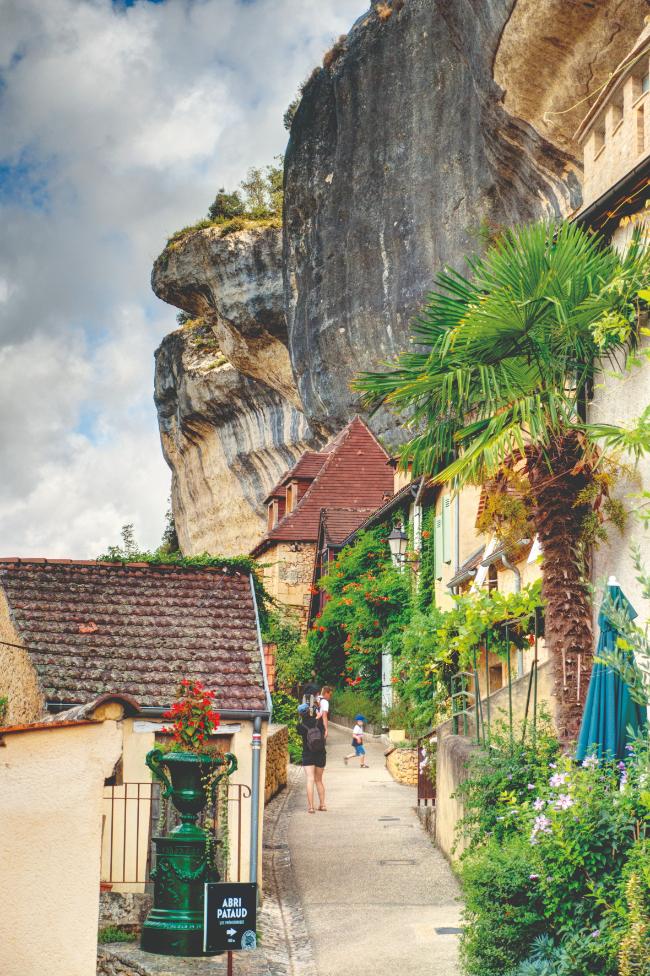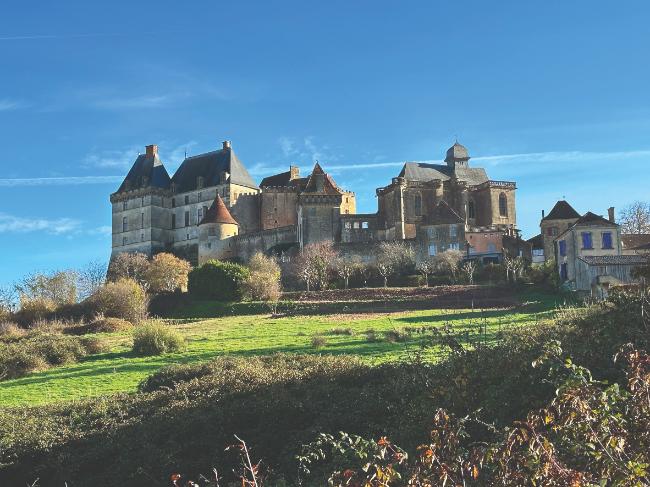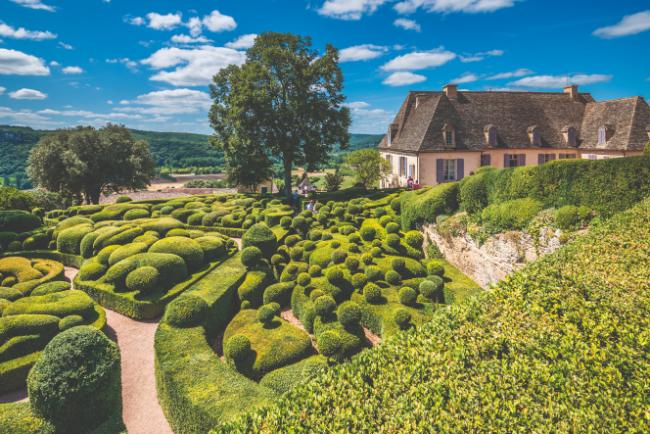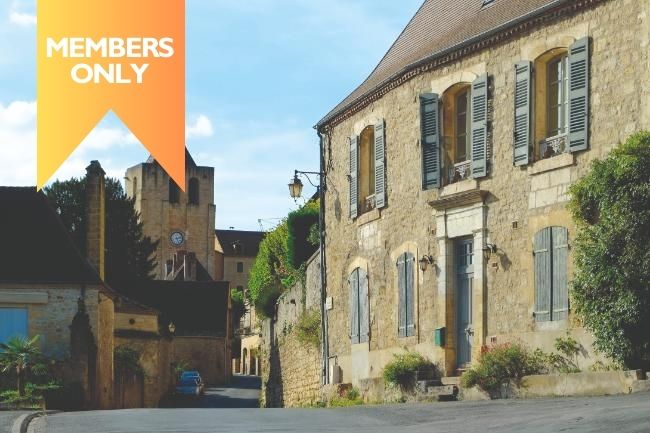Dordogne’s (Second) Best Villages
Within the Dordogne are ten designated Plus Beaux Villages. But there are so many other gorgeous locations that merit travellers’ attention so we set out to find the other ‘beaux villages’.
“Тhere is no such thing as second place. Either you’re first or you’re nothing,” said US baseball manager Gabe Paul. Mr Paul presumably hadn’t visited the Dordogne, for here there are multiple examples of ‘second place’ villages that are anything but nothing. Les Plus Beaux Villages de France is a well-known organisation whose member villages attract thousands of tourists who ‘ooh’ and ‘aah’ at such prettiness. These villages are, after all, the best of the best and there are ten of them in the Dordogne department.
To be labelled a Plus Beau Village, a place must abide by strict criteria, including population size and the number of historic monuments for visitors to ogle. Like some architectural beauty pageant, it means that there are a great number of villages that don’t make the catwalk yet are far from ugly ducklings. Removing the spotlight from the Plus Beaux Villages, I’m off in search of second best.

Les Eyzies © Shutterstock
I begin in the northeast tip of the department, tucked amid the oak and chestnut forests of the Parc naturel régional Périgord-Limousin. Here, my first village, Saint-Pierre-de-Frugie, has only a clutch of stone houses, a pointy-hat church and a private château. It’s the starting point for various walking and cycling routes in the surrounding woods, where, historically, feuillardiers hand-worked the chestnut to create wooden barrels. A sculpture in the village recognises the contribution its residents made to the industry.
As the church bells echo across the misty woodlands, I drive south, passing through Jumilhac-le-Grand with its mighty feudal château, a concoction of round turrets and angular roofs, to Savignac-Lédrier. Here, on the banks of the River Auvézère, and overlooked by another turreted castle and village on the hillsides above, is an historic forge, its blast furnace dating to 1521. All quiet now, this once industrial landscape offers a picturesque riverside walk through its woods.
Further south still, is Hautefort, whose huge château dominates the village that encircles its base. This appears to be the place for brocante shops, though the 17th-century Hôtel de Dieu with its huge rotunda vies for attention. I take a wander along Route du Pont Saint-Jamet for an overall view of the village; it might be second best, but it’s pretty good!

Chateau-Hautefort © OT-Chateau-dHautefort
Characterful detours
Cattle pastures and chestnut woods keep me company on my way west to Excideuil. Here, an angular 15th-century château is the dominant focal point, while in the village centre, designated as a Petite Cité de Caractère, little streets wind this way and that, all worth exploring. I deem Rue Jean Jaurès to be the prettiest, and it leads to Place Bugeaud where the village church chimes out Beethoven’s Ode to Joy on the hour. Excideuil is not the only Petite Cité deemed to be full of character. It’s raining chats et chiens when I arrive in Brantôme, which is also designated as such. This exceptional medieval town, naturally fortified by a bend in the River Dronne, gets busy in summer and on market days. But on a wet winter’s evening, with lights aglow on the shiny wet streets, the town is gloriously deserted, and only Le Puy Joli bar and tabac, opposite Brantôme’s opulent abbey, is open, host to a couple of drinkers. Unlike the rich golden hue of the stone in Excideuil, Brantôme champions creamy tuffeau, reminiscent of the Loire Valley.
I head for Bourdeilles, 9km west of Brantôme, on the route touristique that passes beside the Dronne and beneath the river’s looming limestone gorge. In places, it hovers intimidatingly over the road. Much of old Bourdeilles climbs a hillside to the south of the river, accessed via an ancient bridge. Here, too, is a monstrous-sized castle that towers severely above the river. A giant ginkgo tree, which has spectacularly dropped its yellow fan-shaped leaves, welcomes me as I pass through the fortress walls and climb the dungeon to the rooftop for wincingly high views of the village. Another of the prettiest viewpoints is from the belvedere above Église Saint-Pierre-ès-Liens.

Brantôme © Shutterstock
Passing through Ribérac (worth a stop on Friday market day), I head to Saint-Aulaye-Puymangou, a Petite Cité de Caractère on the westernmost edge of Dordogne that, uniquely within the department, has its own AOC Cognac – there’s a small Musée du Cognac et du Vin for tasters. I hit the signed trail around the village that passes by its Roman church and pick up the Harrison Barker Route, which follows the route of the 19th-century British writer, who travelled on foot and by canoe in southwest France, including the Dronne Valley from Aubeterre to Brantôme. The route can be followed on foot, by bike and, indeed, by canoe.
It’s to Eymet, in the south of the department, that I travel next, crossing the densely chestnut-wooded Double area, which is filled with hundreds of tiny lakes. Beyond Double, the vineyards around Bergerac and Monbazillac take over, a weak winter sun turning the residual orange foliage an iridescent bronze.

Eymet © Shutterstock
Beautiful bastides
Eymet is the first of the Dordogne’s bastide towns that I visit, with a grid of narrow streets breaking away from a central square lined by archways and half-timbered buildings. It’s on one of these, the Avenue de Sainte-Foy, that I stumble across Roses, a ‘vintage’ salon de thé, where an ex-pat British community are busy chatting over a scone and PG Tips about avoiding dodgy builders and the 90-day rule. Eymet is particularly popular with the British, there’s even a fish and chip van that visits every Thursday.
While Eymet is square, the medieval builders in Issigeac chose to shape their village as a circle. Here, narrow streets radiate like the spokes of a wheel, some no more than the width of a Smart car. Half-timbered buildings prettily overhang the streets, most of which seem to be filled with upmarket interior decorating shops.
And so, my route along the ‘bottom’ of the Dordogne department continues in a landscape of hip-roof farmhouses and walnut orchards interspersed with ‘second-best’ villages, each as impressive as the next. There are the bastide towns of Beaumont-du-Périgord and Villefranche-du-Périgord with, respectively, a timber-framed and stone-pillared marketplace apiece, and Biron, with its enormous hilltop château.

Biron © Shutterstock
And then I chance upon Montferrand-du-Périgord, little more than a ribbon of houses lining a shudderingly sharp hill that’s surrounded by oak woods beneath which lies the open Couze Valley. This medieval village is quite extraordinary, and it takes me a while to come to terms with its beauty. Second best? Far from it – I’d place it with the Plus Beaux Villages for charm.
Travelling northeast, I catch up with the River Dordogne at Lalinde, a village that looks particularly appealing as I gaze across the water towards its smart riverside villas. Following the River Vézère (and passing through Plus Beau Village Limeuil) I arrive at Le Bugue, a great place simply to wander – the not particularly grand Grand Rue is a good starting place for its beautiful assemblage of rustic dwellings.

Lalinde © shutterstock
Simply the (second) best
At Les Eyzies, which is also beside the River Vézère, it’s the Rue du Moyen-Âge that makes for a worthwhile ramble, craning skywards to view houses built into the limestone cliffs. It’s been raining and droplets of water come tumbling off the sculpted cliffs metres above and explode on to the rooftops below. The Musée National de Préhistoire is a good place to seek shelter, as are the multitude of bistros, cafés and bars that line the main street.
Saint-Cyprien, a mile or two shy of the River Dordogne, is next on my list. It’s a Petite Cité de Caractère that does, indeed, have character in spades. There’s an upmarket air about the Saturday morning shopping run, the main street filled with boutiques, a smart bookshop and two four-star hotels. I dive into Les Gourmandises de Lucco to sit in one of their velvety padded bucket seats for the best croissant and hot chocolate I’ve tasted in years. Second best it is not.
There’s one last village I’m keen to see, but rather than put myself among the honey-coloured houses of Saint-Julien, I climb to the belvedere in the remarkable Jardin de Marqueyssac, which hugs a rocky limestone outcrop above the Dordogne river. This colourful garden, which is listed as a monument historique, is the best place from which to view the unassuming hillside village of Saint-Julien, humble in comparison with its brash trio of Plus Beaux Villages neighbours La Roque-Gageac, Castelnaud-la-Chapelle and Beynac-et-Cazenac, all showy and unbelievably fantastic and also visible from the Jardin de Marqueyssac. Visit them if you must. I’m happy with second best.
From France Today Magazine

Jardins de Marqueyssac © shutterstock
Sorry, it looks like you don’t have access to this content.
Ohlala! It looks like you’re not a Member yet
Join to view this content!
(If you are a Member, log in or reset your password below or contact us so we can help)
- Log in
- Forgot password
Lead photo credit : Saint-Cyprien © shutterstock
Share to: Facebook Twitter LinkedIn Email
More in Dordogne, French villages, south-west
Leave a reply
Your email address will not be published. Required fields are marked *






REPLY
REPLY